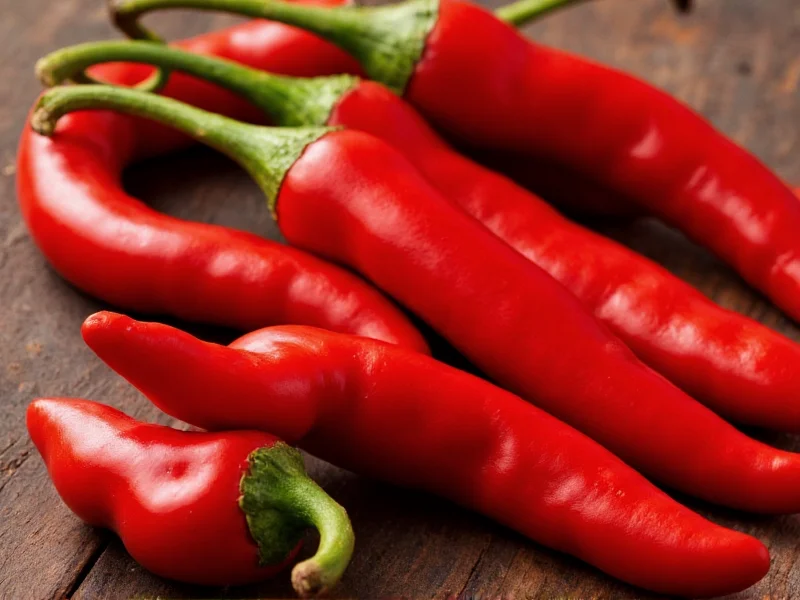If you've ever taken a bite of chilli only to feel your mouth ignite, you're not alone. The burning sensation from overly spicy food affects millions daily. Understanding why certain remedies work—and why others don't—can transform your culinary experience from painful to pleasurable. This guide delivers science-backed solutions you can implement immediately, plus practical prevention strategies for future cooking.
Why Chilli Feels Too Spicy: The Science Simplified
Capsaicin, the active compound in chillies, triggers heat receptors in your mouth. When chilli becomes too spicy, it means capsaicin concentration exceeds your tolerance threshold. Individual sensitivity varies due to:
- Genetic differences in TRPV1 receptors
- Previous exposure to spicy foods
- Current hydration and health status
- Food matrix (fatty foods intensify capsaicin release)
Immediate Remedies for Overly Spicy Chilli
When facing chilli that's too hot, choose remedies based on scientific principles, not folklore. The following solutions work by either binding to capsaicin, diluting its concentration, or counteracting its chemical effects.
| Remedy Type | Effectiveness | Time to Relief | Accessibility |
|---|---|---|---|
| Dairy (milk, yogurt) | ★★★★★ | 30-60 seconds | High |
| Sugar/honey | ★★★☆☆ | 1-2 minutes | High |
| Starchy foods (bread, rice) | ★★★☆☆ | 2-3 minutes | High |
| Acidic solutions (lemon, vinegar) | ★★☆☆☆ | 1-2 minutes | Medium |
| Water | ★☆☆☆☆ | No relief | High |
Dairy: The Gold Standard Solution
Full-fat dairy products work best for remedies for overly spicy food because casein proteins break the bond between capsaicin and pain receptors. Skim milk provides less relief since fat helps dissolve capsaicin. For immediate results:
- Swish cold whole milk in your mouth for 30 seconds
- Consume plain yogurt or sour cream
- Avoid flavored dairy which may contain capsaicin-enhancing ingredients
What Not to Do With Spicy Chilli
Common misconceptions worsen the burning sensation. When your chilli is too spicy, avoid:
- Drinking water (spreads capsaicin across your mouth)
- Consuming alcohol (increases capsaicin absorption)
- Eating more spicy food to "build tolerance" (causes tissue damage)
- Using ice directly (can damage sensitive tissues)
Preventing Future Spicy Food Disasters
Professional chefs use these techniques to avoid how to fix chilli that's too spicy situations:
Gradual Addition Method
Add chillies incrementally:
- Start with 1/4 of your planned amount
- Cook for 10 minutes (heat intensifies during cooking)
- Taste carefully using a spoon (not your finger)
- Add more in small increments until desired heat
Heat Testing Techniques
Before adding chillies to dishes, test their Scoville rating:
- Scrape seeds from one chilli into 1/4 cup warm broth
- Wait 5 minutes for capsaicin release
- Taste broth with clean spoon
- Adjust quantity based on results
Building Long-Term Spice Tolerance
Regular exposure increases capsaicin tolerance through receptor desensitization. For those wanting to enjoy spicier chilli dishes without discomfort:
- Start with mild peppers (poblano, Anaheim)
- Pair spicy foods with dairy regularly
- Increase heat levels gradually over weeks
- Consume capsaicin-containing foods at room temperature (heat intensifies when hot)
When to Seek Medical Help
While most overly spicy food incidents resolve within 30 minutes, seek medical attention if you experience:
- Difficulty breathing after eating spicy food
- Prolonged burning lasting more than 2 hours
- Nausea or vomiting
- Skin irritation from handling extremely hot chillies
FAQ: Common Questions About Spicy Chilli
Why does milk help with spicy food but water makes it worse?
Milk contains casein, a protein that binds to capsaicin and washes it away from pain receptors. Water, being polar, doesn't dissolve capsaicin (which is non-polar) and instead spreads it across your mouth, intensifying the burning sensation.
Can sugar really reduce spiciness in chilli dishes?
Yes, sugar helps neutralize spiciness through chemical interaction. Capsaicin has a slightly negative charge, while sugar molecules can interfere with this charge distribution. Adding 1-2 teaspoons of sugar or honey to overly spicy chilli creates balance without altering the dish's fundamental flavor profile.
How can I prevent chilli from becoming too spicy during cooking?
Prevent overly spicy chilli by removing seeds and membranes (where most capsaicin resides), adding chillies gradually while tasting, and incorporating dairy or starch early in cooking. Remember that heat intensifies as dishes simmer—what tastes mild when warm becomes significantly hotter when fully cooked.
Does alcohol help with spicy food burning?
No, alcohol worsens the burning sensation. Ethanol increases capsaicin solubility, allowing more of the compound to reach pain receptors. While beer might provide temporary cooling from carbonation, the alcohol content ultimately intensifies and prolongs the burning sensation compared to dairy-based solutions.
Can you build tolerance to spicy food over time?
Yes, regular exposure to capsaicin desensitizes TRPV1 receptors through a process called defunctionalization. Start with mild peppers and gradually increase heat levels over weeks. Consistent exposure (every 2-3 days) yields better results than sporadic consumption. Most people develop noticeable tolerance within 4-6 weeks of regular spicy food consumption.











 浙公网安备
33010002000092号
浙公网安备
33010002000092号 浙B2-20120091-4
浙B2-20120091-4